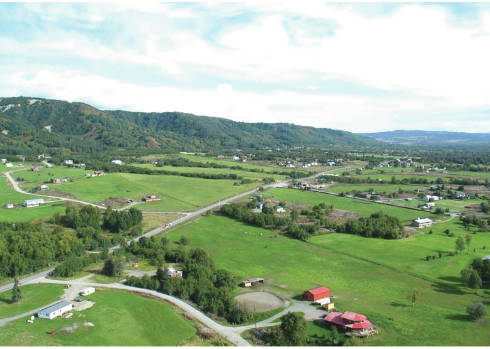Looking for something to do while you are a captivated audience by the menacing and deadly coronavirus? Stay tuned for a five-part series, “A Soils Primer” for the Homer area. This is meant to be a non-technical, for the most part, introduction of the Fab Four of Homer soils.
Undoubtably, most of you have been totally intrigued by the wonderful world of soils, but have not had the time to properly explore this fascinating universe. Wait no longer. As Leonardo da Vinci astutely noted about 500 years ago, “We know more about the movement of celestial bodies than about the soil underfoot.” Soils are so ubiquitous we rarely think of them beyond times when we are gardening, digging a foundation or getting the mud off the bottoms of our extra tuffs. Most of our food, fiber, building sites, transportation corridors, environment, etc. etc. are intrinsically tied to the soils.
It is encouraging to witness the expansion of the current gardening, high tunnel and farming trend in Homer and throughout Alaska. If there is a silver lining in this coronavirus pandemic it will be a reminder of where our food comes from and perhaps a reassessment of work ethic and what is truly important in our lives.
I grew up on a diversified farm in the Midwest with a love/hate relationship with the flood plain soils. The sweet mysterious aromas of freshly turned soils and recently cut hay were indelible harbingers of promise and hope of a pleasant and productive summer. The prospects for the season could turn for the worst in short order. In the days before tractors with air-conditioned cabs, if it became hot, dry and windy during the planting season the lungs of tractor drivers were filled with dirt. Quite often these were kids’ lungs. No one wore a facemask. If it were a wet spring or fall the soils would swallow tractors and combines and make farming miserable.
OK, are you tired of hearing “Wash your hands, wash your hands, wash your hands?” Once the snow ice, and mud are gone you can get out in your garden and run your fingers through the warm, moist, luxurious soils. Get your hands dirty. No worries — soils are our friends. For the most part, the billions of soil microbes, fungi, invertebrates and worms in the soil biome you will be caressing are just minding their own business dutifully breaking down bits of organic matter and releasing nutrients for the plants that will grace our tables.
Are you missing handshakes and hugging your friends? Get down and roll in the dirt if you want. It ain’t gonna hurt. Soils are our sustenance, and they have good microbes that aren’t intent on killing us.
Each of the four soils that will be introduced have differing chemical and physical properties and are found on unique parts of the landscape. If you are interested in the technical details of soils a wealth of information is available on Natural Resources Conservation Service (NRCS) websites that will be included each week. Soil Survey reports and maps for the Western Kenai Peninsula, the Lower Kenai Peninsula, and most counties in the United States are also available on the internet.
Here are The Fab Four local soils.
• Kachemak: Light and fluffy, the envy and dream soil of most gardeners.
• Beluga: Whoa, with a name like that you immediately know somethings up.
• Mutnala: The boney neighbor with a nice profile.
• Starichkof: If you are looking to go organic, this one is for you and it is made in Alaska.
Doug Van Patten, a retired soil scientist, had the pleasure of exploring, classifying, and mapping soils throughout Alaska and three other states for 40 years.


